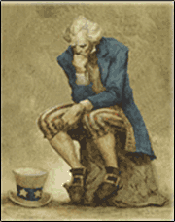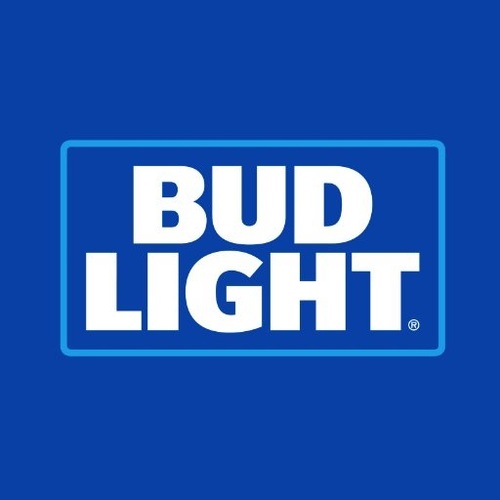
(function(d, s, id) { var js, fjs = d.getElementsByTagName(s)[0]; if (d.getElementById(id)) return; js = d.createElement(s); js.id = id; js.src = “https://connect.facebook.net/en_US/sdk.js#xfbml=1&version=v3.0”; fjs.parentNode.insertBefore(js, fjs); }(document, ‘script’, ‘facebook-jssdk’)); –>
–>
February 4, 2024
The anticipation is not titillating. Bud Light has announced plans for a new Super Bowl commercial where it promises a return to “funny.” The kind of “funny” beer drinkers used to associate with the brand before it went woke.
‘); googletag.cmd.push(function () { googletag.display(‘div-gpt-ad-1609268089992-0’); }); document.write(”); googletag.cmd.push(function() { googletag.pubads().addEventListener(‘slotRenderEnded’, function(event) { if (event.slot.getSlotElementId() == “div-hre-Americanthinker—New-3028”) { googletag.display(“div-hre-Americanthinker—New-3028”); } }); }); }
But this year will be different says Kyle Norrington, Anheuser-Busch’s chief commercial officer who is charged with resurrecting the once-dominant national beer brand. Fittingly for the venue, the Super Bowl ad appears to be a “Hail Mary” pass for a brand which committed marketing suicide last April, and since then it has refused to do the most basic and obvious things needed to restore trust with its core consumer.
Norrington told the Wall Street Journal that in its planned 60-second Bud Light Super Bowl commercial, “You’re going to see what… our brand lovers expect, which is some really funny advertising.” He added that the spot will introduce a new brand character and continue to rely on its current milquetoast tagline, “Easy to Drink, Easy to Enjoy,” because everyone knows beer drinkers find other beers more complicated and difficult to drink or enjoy.
A Case of Marketing Hari Kari
‘); googletag.cmd.push(function () { googletag.display(‘div-gpt-ad-1609270365559-0’); }); document.write(”); googletag.cmd.push(function() { googletag.pubads().addEventListener(‘slotRenderEnded’, function(event) { if (event.slot.getSlotElementId() == “div-hre-Americanthinker—New-3035”) { googletag.display(“div-hre-Americanthinker—New-3035”); } }); }); }
Since Bud Light has not yet released the ad, the world must sit and wait for the big game, and in the meantime buy another round of Miller Lites while considering how the brand got here.
Last April, Bud Light tapped a transgender influencer named Dylan Mulvaney to help it court the much sought-after beer-drinking demographic of men who think they’re women. This was the brainchild of the brand’s then head of marketing Alissa Heinerscheid. The Harvard-educated brand manager had apparently revealed her disdain for the brand’s core marketing demographic in a podcast interview where she said she wanted to get the brand’s marketing away from “fratty, sort of out of touch humor.”
This all came to light when controversy erupted over the Mulvaney spots which depicted him in a bubble bath, surrounded by Bud Light cans emblazoned with his image on them. Oddly, millions of working and middle class straight men who were loyal brand customers at the time were turned off. Not only were they turned off, but they were a little insulted, too.
In a marketplace with so many options, beer drinkers choose beers they like, that they can afford, and that they can identify with. Up until Mulvaney entered the picture, Bud Light had given its consumers all three and in return, its customers rewarded it by making it the most dominant beer brand in America.
Throwing Money at the Problem
As of January 20, 2024, Bud Light Sales were down 29.9 percent year over year when compared to the same period last year, according to Bump Williams Consulting. The brand has been knocked off its pedestal as the top-selling beer brand in America. Repeated attempts to reconcile its relationship with its customers have fallen flat.
‘); googletag.cmd.push(function () { googletag.display(‘div-gpt-ad-1609268078422-0’); }); document.write(”); googletag.cmd.push(function() { googletag.pubads().addEventListener(‘slotRenderEnded’, function(event) { if (event.slot.getSlotElementId() == “div-hre-Americanthinker—New-3027”) { googletag.display(“div-hre-Americanthinker—New-3027”); } }); }); } if (publir_show_ads) { document.write(“
 One thing is for sure. Its failed attempts at turning the brand around is not for lack of spending. In October 2023, the brand announced a $105 million-per year marketing partnership with the UFC. It remains to be seen whether that sponsorship has or will yield any real results for anyone other than the UFC.
One thing is for sure. Its failed attempts at turning the brand around is not for lack of spending. In October 2023, the brand announced a $105 million-per year marketing partnership with the UFC. It remains to be seen whether that sponsorship has or will yield any real results for anyone other than the UFC.
It’s Just Beer, Right?
So, why is the brand having so much difficulty getting those customers back? It’s just beer, right?
Yes and no. Yes, it is just beer, and as such, consumers will have no trouble and make no sacrifice in switching brands. They can go to the same stores and bars, pay roughly the same prices and enjoy beer of comparable taste without having to make any changes in lifestyle.
But the reason they’ve been reluctant to return to the brand has nothing to do with beer consumption. It has everything to do with perceptions of how the people behind that brand see them. They feel taken for granted, thought of as stupid, and as standing for nothing.
Branding is nothing if not effective at turning a transactional relationship into something more meaningful, more emotional. The Bud Light brand manager who created the controversy, and the Anheuser-Busch executives who’ve been involved in decision-making ever since exposed their organization’s underlying belief which is that the relationship is nothing but transactional.
Bud Light Lied, Beers Died
The root issue is one of the most common problems at the center of many crisis situations. Bud Light lied by endorsing a cultural lie. It aligned itself with a man who thinks he’s a woman, and in doing so, it at once endorsed and celebrated a fundamental cultural lie. While transgenderism may be a more nuanced issue on Ivy League campuses and at Burning Man, traditional Bud Light drinkers don’t see it that way. They know men cannot actually be women, and women cannot actually be men.
These are largely people with working-class jobs. They date and marry real people of the opposite sex, and have real kids the way nature intended. To tell them that everything about them is negotiable is not only dishonest, but it’s an insult to their intelligence and to their most basic belief systems.
So, when controversy erupted and boycotts ensued over the Mulvaney situation, rather than worry how it insulted its core customer, beer company leadership worried about the feelings of the people behind a cultural lie. Above all, Bud Light refused and still refuses to take any chances at insulting them even at the expense of the brand’s very survival.
This has exacerbated the problem among those now former Bud Light drinkers. In a world that now considers self-identification as fluid and sacred for fear of offending anyone, those who self-identify in traditional terms are the one group it’s okay to insult without risk of repercussions. Or so they thought.
What’s the Play?
So, here we are. For Bud Light, it’s fourth and long. No timeouts and less than ten seconds to play. They’ve got to throw a Hail Mary and hope someone on team Bud Light catches it. It seems the play they drew up in the huddle is a 60-second commercial that likely will step lightly around anything that could potentially offend anybody. This is not a good recipe for laugh-out-loud humor. But more than that, the brand will avoid the one thing that would win its customers back overnight and without much money.
Apologize for signing on to the lie which is transgenderism. Tell exactly how you did it and why you did it. And how you won’t do it again. That’s how to restore trust. That’s how in the world of high-stakes brand marketing, you score and win.
Does Bud Light know this? Of course they do. They just don’t have the guts to do it and risk offending people who never did or never will buy their beer.
Tim O’Brien is a veteran corporate communications consultant who operates O’Brien Communications in Pittsburgh.
Image: Bud Light
<!–
–>
<!– if(page_width_onload <= 479) { document.write("
“); googletag.cmd.push(function() { googletag.display(‘div-gpt-ad-1345489840937-4’); }); } –> If you experience technical problems, please write to [email protected]
FOLLOW US ON
<!–
–>
<!– _qoptions={ qacct:”p-9bKF-NgTuSFM6″ }; ![]() –> <!—-> <!– var addthis_share = { email_template: “new_template” } –>
–> <!—-> <!– var addthis_share = { email_template: “new_template” } –>






